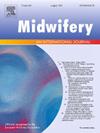Successful surgical repair outcomes and determinants among obstetric fistula patients: A multi-centre study from Ethiopia
IF 2.5
3区 医学
Q1 NURSING
引用次数: 0
Abstract
Background
Obstetric fistula is a life-altering form of complex obstetric injury caused by prolonged obstructed labour. It remains a significant public health concern in developing countries, particularly in regions across the northern half of sub-Saharan Africa and in parts of the Middle East and South Asia. Many women undergo surgery to repair their fistulas; however, there are inconsistent reports in the literature regarding surgical repair outcomes, particularly in Ethiopia.
Methods
The study was undertaken at six treatment centres in Ethiopia using a longitudinal cohort design among 386 women with obstetric fistula. The participants underwent surgical repair of their fistula and were followed up until their outcome was determined. The data were collected using a structured questionnaire and an electronic data collection tool, Research Electronic Data Capture. The collected data were exported in various formats and analysed using R software.
Results
The study revealed that 77.5 % of the participants achieved successful surgical repair. Underweight body mass index (BMI) (AOR: 0.68, 95 %CI = 0.252, 1.977), having an alive child (AOR: 3.19, 95 %CI = 1.089, 9.638), fistula length > 2 cm (AOR: 0.40, 95 %CI = 0.183, 0.851) and urethral damage (AOR: 0.41, 95 %CI = 0.221, 0.753) showed significant associations with successful surgical repair outcomes.
Conclusion
While many obstetric fistula repairs are successful, the overall success rate in Ethiopia falls below the World Health Organization's recommendation. Collaborative efforts are needed to revise the treatment approaches to meet the World Health Organization's standards.
产科瘘患者成功的手术修复结果和决定因素:来自埃塞俄比亚的一项多中心研究
背景:产科瘘是由长时间难产引起的复杂产科损伤的一种改变生命的形式。在发展中国家,特别是在整个撒哈拉以南非洲北部地区以及中东和南亚部分地区,它仍然是一个重大的公共卫生问题。许多妇女接受手术来修复她们的瘘管;然而,文献中关于手术修复结果的报道不一致,特别是在埃塞俄比亚。方法本研究在埃塞俄比亚的6个治疗中心进行,采用纵向队列设计,对386名产科瘘妇女进行研究。参与者接受手术修复他们的瘘管,并随访,直到他们的结果确定。使用结构化问卷和电子数据收集工具(Research electronic data Capture)收集数据。收集的数据以各种格式导出,并使用R软件进行分析。结果77.5%的患者手术修复成功。体重不足体重指数(BMI) (AOR: 0.68, 95% CI = 0.252, 1.977),有活产儿(AOR: 3.19, 95% CI = 1.089, 9.638),瘘管长度>;2 cm (AOR: 0.40, 95% CI = 0.183, 0.851)和尿道损伤(AOR: 0.41, 95% CI = 0.221, 0.753)与手术修复成功率有显著相关性。结论:虽然许多产科瘘管修复是成功的,但埃塞俄比亚的总体成功率低于世界卫生组织的建议。需要共同努力,修订治疗方法,以符合世界卫生组织的标准。
本文章由计算机程序翻译,如有差异,请以英文原文为准。
求助全文
约1分钟内获得全文
求助全文
来源期刊

Midwifery
医学-护理
CiteScore
4.50
自引率
7.40%
发文量
221
审稿时长
13.4 weeks
期刊介绍:
Midwifery publishes the latest peer reviewed international research to inform the safety, quality, outcomes and experiences of pregnancy, birth and maternity care for childbearing women, their babies and families. The journal’s publications support midwives and maternity care providers to explore and develop their knowledge, skills and attitudes informed by best available evidence.
Midwifery provides an international, interdisciplinary forum for the publication, dissemination and discussion of advances in evidence, controversies and current research, and promotes continuing education through publication of systematic and other scholarly reviews and updates. Midwifery articles cover the cultural, clinical, psycho-social, sociological, epidemiological, education, managerial, workforce, organizational and technological areas of practice in preconception, maternal and infant care.
The journal welcomes the highest quality scholarly research that employs rigorous methodology. Midwifery is a leading international journal in midwifery and maternal health with a current impact factor of 1.861 (© Thomson Reuters Journal Citation Reports 2016) and employs a double-blind peer review process.
 求助内容:
求助内容: 应助结果提醒方式:
应助结果提醒方式:


